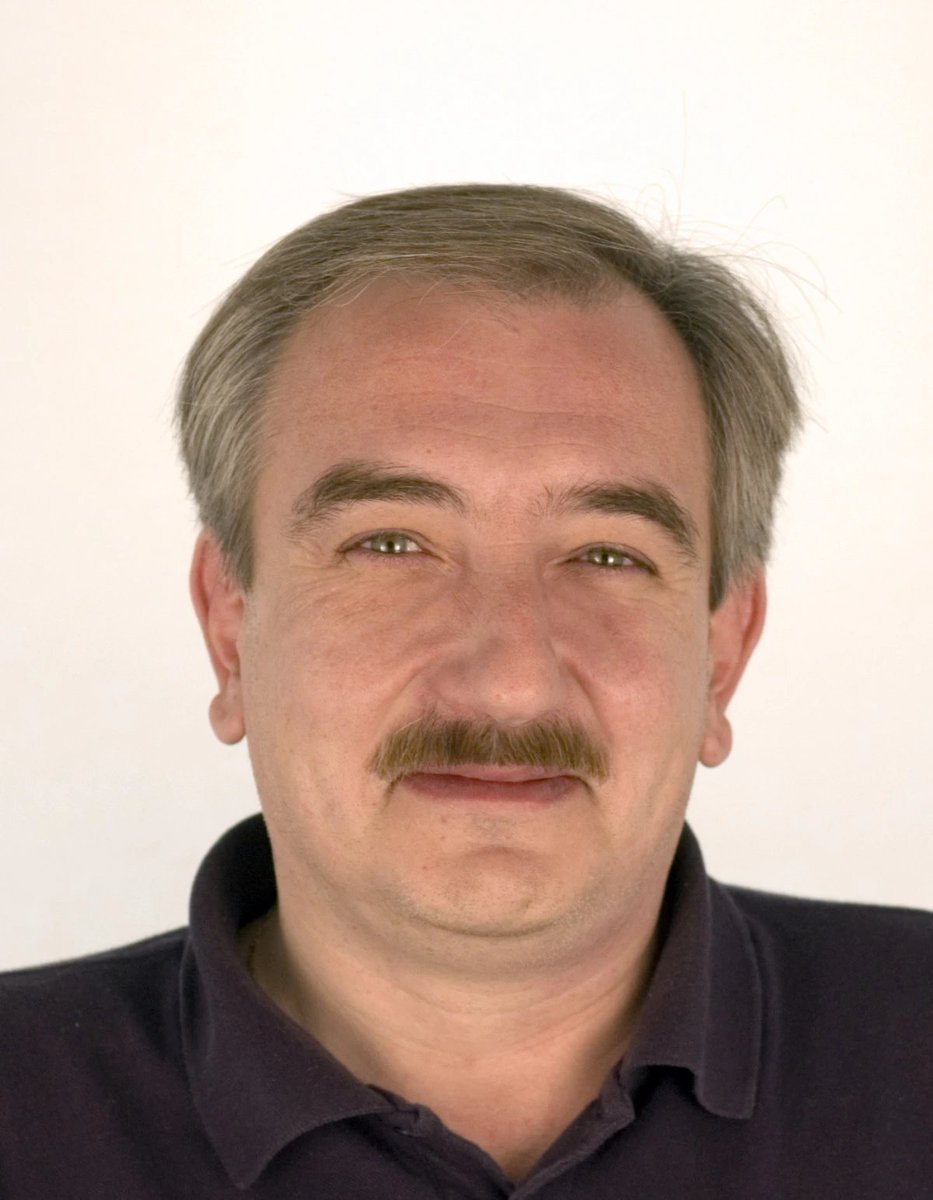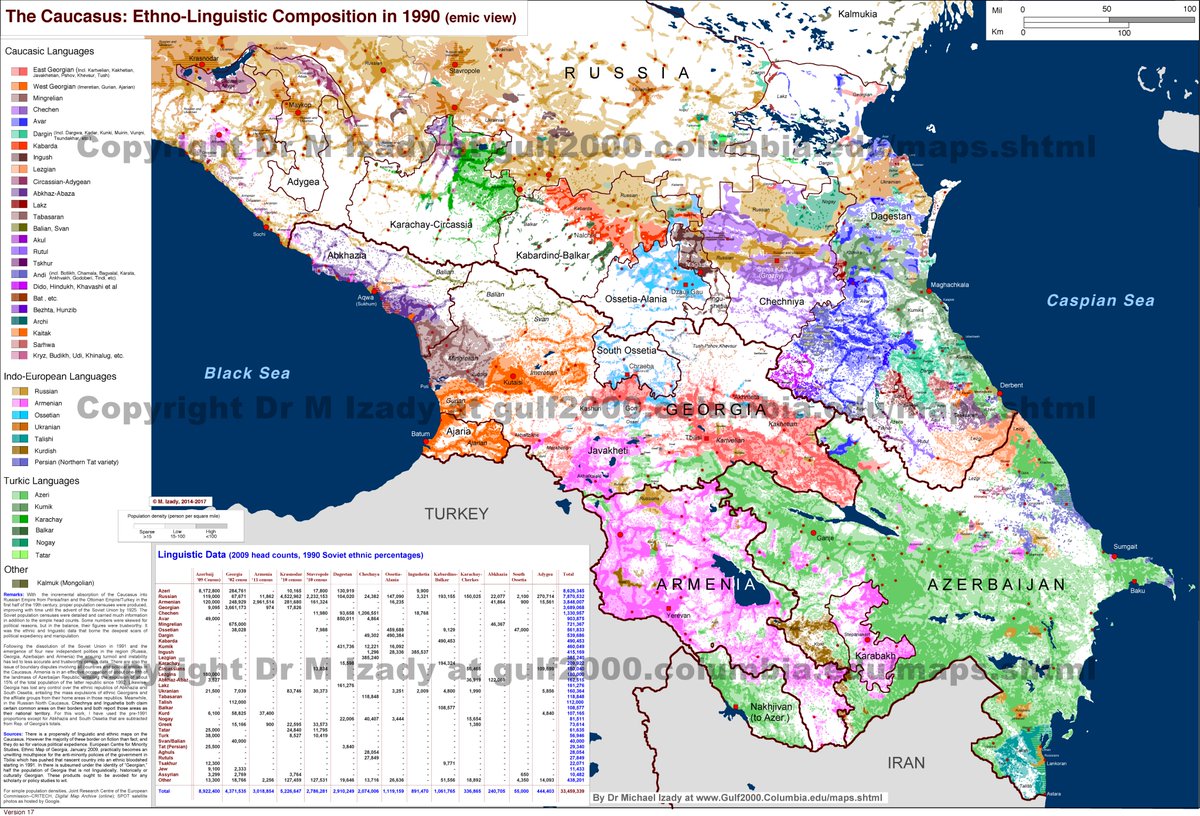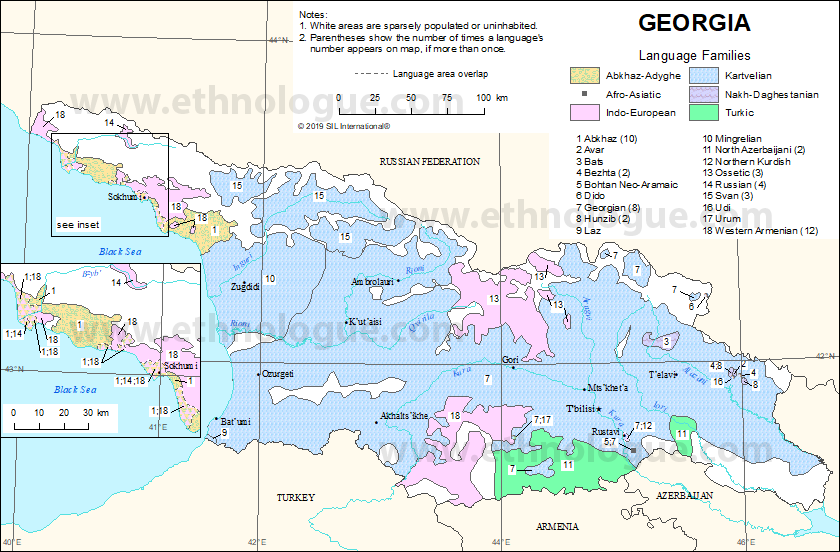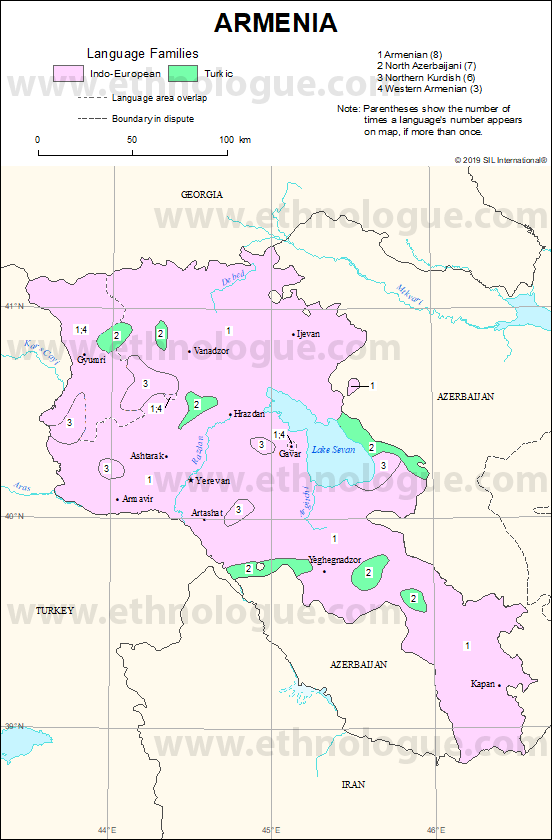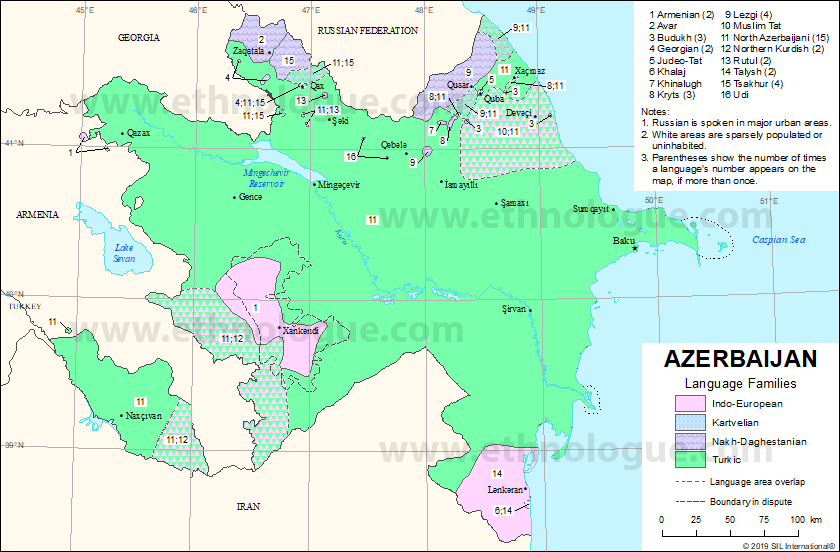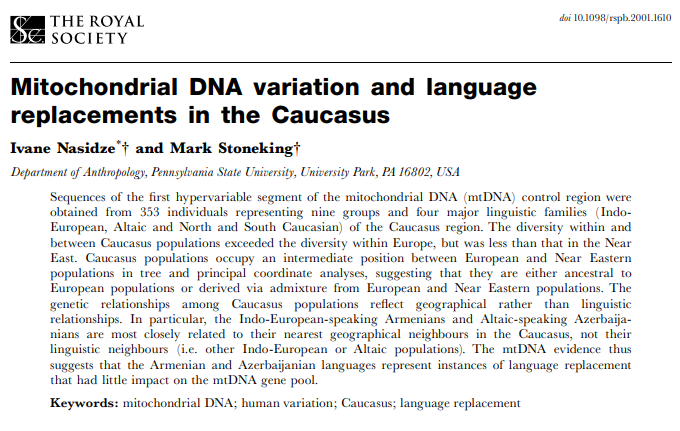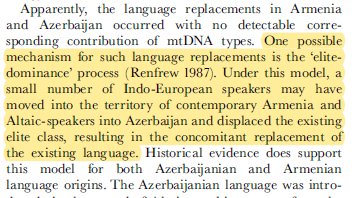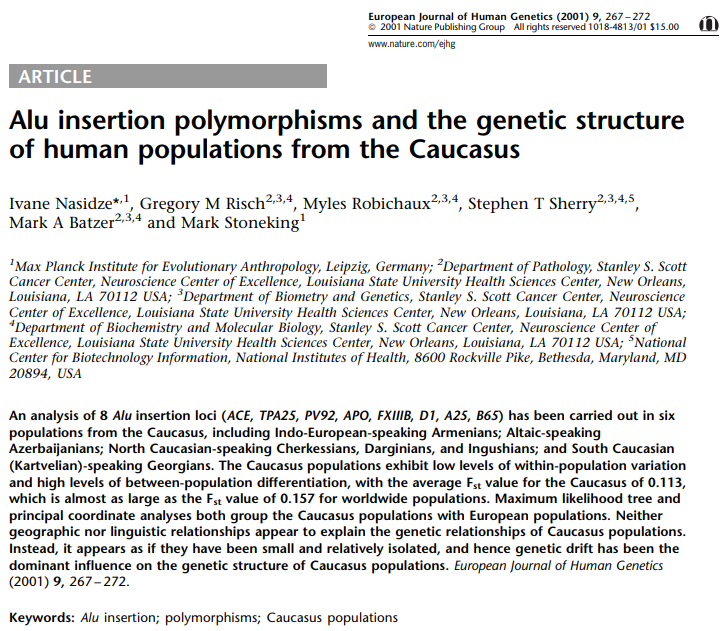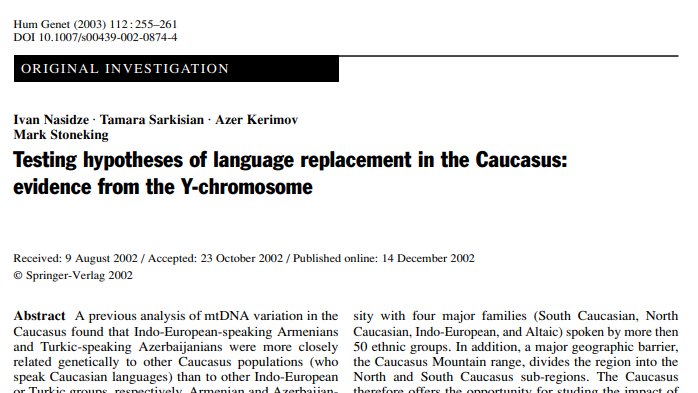THREAD 1/13: To better understand the Nagorno-Karabakh conflict, I turn to the works of a Georgian molecular anthropologist, Dr. Ivane (Vano) Nasidze (1964-2012) at @MPI_EVA_Leipzig, who studied the fascinating ethnolinguistic diversity (source: https://bit.ly/3kmJqbF )">https://bit.ly/3kmJqbF&q...
2/13: ..in the Caucasus to make sense of the role of history and migration in how such a small parcel of land became home to people representing 40+ ethnic groups, 50+ languages in the Indo-European, Mongolic, Semitic and Turkic language families (source: https://bit.ly/34j6h2g )">https://bit.ly/34j6h2g&q...
3/13: South Caucasus, comprised of #Armenia, #Azerbaijan, #Georgia, is 6.5 times smaller than Los Angeles in land area but has three different majority languages: Armenian (Indo-European), Azerbaijani (Altaic/Turkic), Georgian (Caucasian/Kartvelian) (source: @theEthnologue)
4/13: How does Nasidze& #39;s work factor into this? Using complete mitochondrial DNA (mtDNA) of 353 individuals representing all major linguistic families in the Caucasus, Nasidze & Stoneking (2001) test the correlation between genetic and linguistic differentiation
5/13: In other words, are people speaking similar languages related genetically and vice versa? They find that Indo-European-speaking Armenians and Altaic-speaking Azerbaijanis are more closely related to each other than the people in their respective language families
6/13: They also speculate the & #39;elite dominance& #39; process where "a small number of Indo-European speakers may have moved into the territory of contemporary Armenia and Altaic-speakers into Azerbaijan and displaced the existing elite class" (Nasidze & Stoneking, 2001, 1205)
7/13: In the @ejhg_journal article, Nasidze and colleagues (2001) find that "..both Indo-European speaking Armenians and Altaic-speaking Azerbaijanians group with their geographic neighbors in the Caucasus, rather than with their linguistic neighbors.."
8/13: "[..] Remarkably, the genetic distance between pairs of populations was significantly correlated with geographic distance, despite the presence of the Caucasus Mountains as a potentially significant barrier to gene flow" (Nasidze et al., 2001, 268).
9/13: Using complete mitochondrial (mt) genomes of 389 Armenian, Azerbaijani, and Georgian speaking males, Nasidze and colleagues also test the hypotheses of language replacement in the Caucasus to understand the relations between genetic proximity and linguistic diversity
10/13: Nasidze et al. (2003) found that Indo-European-speaking Armenians and Turkic-speaking Azerbaijanis are more closely related genetically to Caucasian-speaking groups in the Caucasus than to people speaking Indo-European and Turkic languages
11/13: So what?! While Armenians and Azerbaijanis stoke violence against each other and fight for Nagorno-Karabakh, peace messages and humane approach are ignored. Nasidze& #39;s work shows us that peace is not an empty pacifist message, we are related to each other by blood
12/13: There must be a way for the two nations to reconcile their differences and find peaceful co-existence. We can continue to ignore the calls for peace but we can& #39;t ignore the science. We need to bring both sides together to rebuild, rehabilitate, and restore peace
13/13: Full disclosure: I& #39;m not a geneticist just an education expert who studied international relations and sociolinguistics as an undergrad. Please excuse erroneous language around genetic terms

 Read on Twitter
Read on Twitter